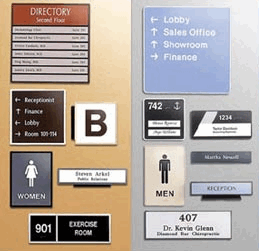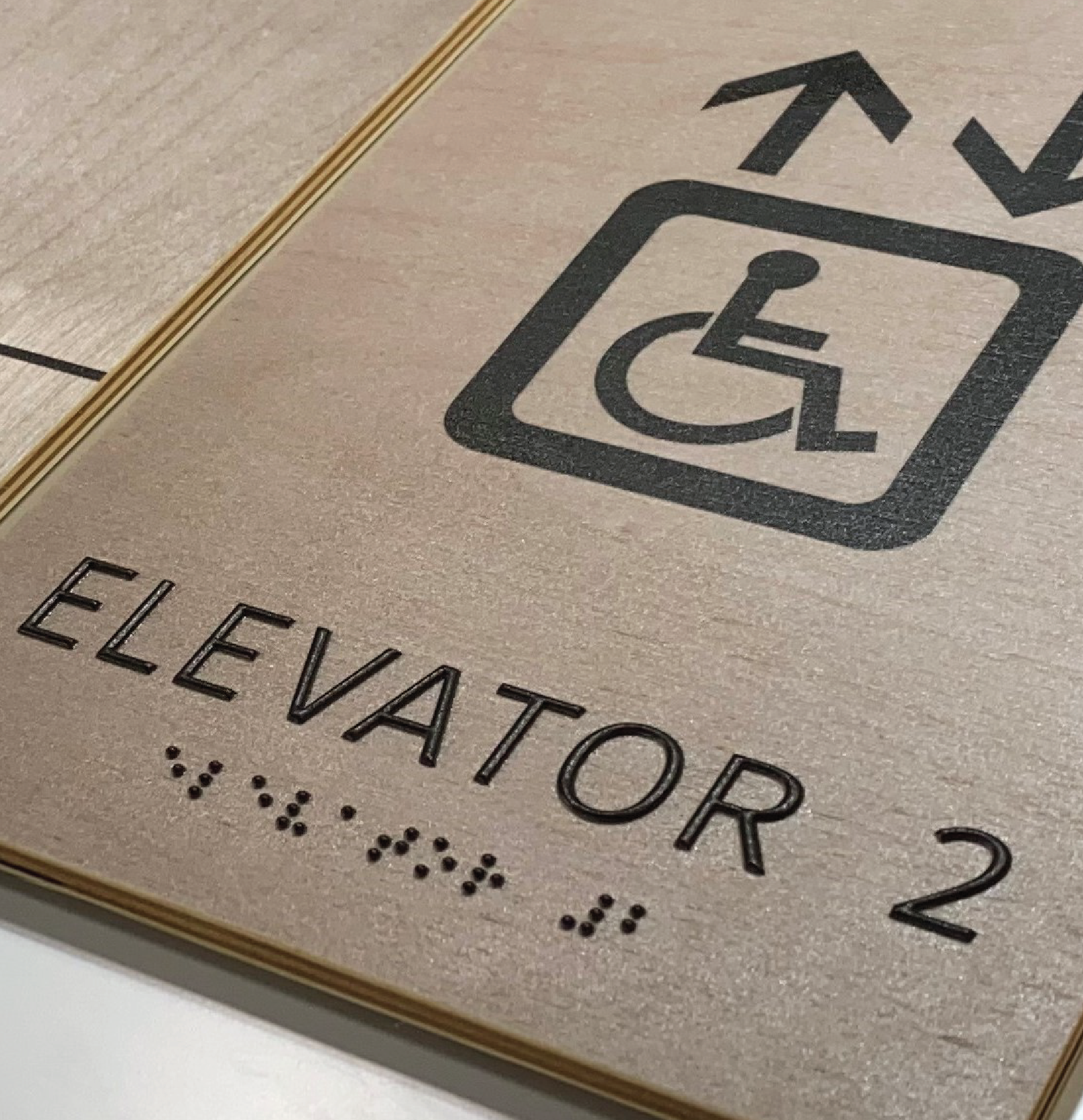ADA Signs: Guaranteeing Availability and Conformity in Public Spaces
ADA signs plays an essential function in assuring availability and conformity within public areas, significantly adding to a comprehensive atmosphere for people with disabilities. By sticking to ADA criteria, signage not only helps with navigation but additionally highlights an organization's devotion to diversity and equal rights. As we explore the nuances of ADA signage, from tactile features to develop complexities, it's critical to think about just how these aspects coalesce to copyright the rights of all individuals. What are the typical mistakes organizations deal with in maintaining compliance, and exactly how can future patterns in signs proceed to drive ease of access ahead?
Relevance of ADA Signage
In contemporary society, the importance of ADA signage prolongs past simple conformity with lawful requireds to embody a commitment to inclusivity and ease of access for all individuals. These indications are crucial in producing atmospheres where individuals with handicaps can browse public areas with the very same ease and self-reliance as those without impairments. By giving standardized and clear details, ADA signs makes sure that everybody can access facilities, solutions, and details without barriers.
The significance of ADA signs hinges on its capability to improve the lifestyle for individuals with handicaps by advertising equivalent accessibility. It eliminates the obstacles that could otherwise hinder their capacity to get involved completely in area life. These signs serve as visible indications of an organization's devotion to variety and equal rights, showing broader social values that champion the rights and dignity of all people.
Moreover, ADA signs plays a crucial role in public safety. By directing individuals to leaves, toilets, and various other necessary facilities, it makes sure that all people, despite physical capability, can leave securely throughout emergency situations. In recap, ADA signs is not simply a regulative requirement yet a powerful device for fostering a inclusive and equitable society.
Crucial Element of Conformity

Placement is essential; indications have to be installed in locations that are quickly noticeable and reachable. Typically, signs must be placed between 48 and 60 inches from the ground to ensure access for both standing and wheelchair customers. Tactile components, such as Braille, are essential for people with aesthetic disabilities, giving critical details in a non-visual layout.
High-contrast colors between the message and history are required to enhance readability for people with low vision. The ADA mandates particular comparison proportions to guarantee clarity. In addition, character size is a vital factor to consider, with minimum elevation needs determined by the watching range to make sure readability from numerous angles.
Style Considerations for Access
Designing accessible signs needs a meticulous technique to ensure it fulfills the needs of all customers, especially those with disabilities. This includes considering different design aspects that enhance readability and functionality. Key aspects include the option of typeface, color comparison, and tactile features. Font styles need to be sans-serif, with simple and clear letterforms, to assist in very easy reading. The dimension of the message is equally essential, with ADA guidelines suggesting a minimal height based on watching distance to guarantee readability.
Contrasting shades in between text and background are vital for exposure, specifically for people with visual impairments. A high contrast ratio assists differentiate the message from its history, boosting readability under numerous lights problems. In addition, responsive elements, such as Braille and increased personalities, are essential for people who are blind or have low vision. These aspects ought to be found at a regular elevation and placement to ensure easy access and comprehension.
Furthermore, the positioning of signs plays a considerable function in availability. Indications ought to be installed in areas that are conveniently obtainable and unobstructed. Guaranteeing that signs is placed at proper heights and angles makes it possible for all individuals, including those using mobility devices, to communicate with them effectively.
Usual Errors to Avoid

One more widespread error is the incorrect placement of signs. ADA guidelines define exact height and area demands to make certain that indications are obtainable and quickly noticeable by all people, including those making use of wheelchairs. Overlooking these standards not only hampers access however also runs the risk of non-compliance with legal requirements.
In addition, inadequate comparison between text and history is a frequent oversight. Appropriate contrast is necessary for readability, particularly for individuals with reduced vision. Designers often pick colors that are visually enticing but lack the essential contrast, making the message hard to discern.
Finally, some developers fail to integrate responsive components, such as Braille, which are essential for individuals that are blind. Leaving out these features not just results in non-compliance with ADA laws yet additionally limits accessibility for a segment of the population that depends on tactile info.
Future Trends in Signage
Innovations in modern technology and increasing awareness of inclusivity are shaping the future trends in signage design. As culture comes to be more conscious of varied demands, the assimilation of clever technologies right into signs is obtaining grip. Digital signage, as an example, pop over to these guys is developing to include interactive functions and real-time updates, which can be important in supplying vibrant information in public spaces. These indicators usually include touch displays or gesture-based controls, allowing individuals to browse material tailored to their particular requirements.
One more emerging pattern is the utilization of enhanced reality (AR) check my reference to improve user experience. AR-enabled signs can overlay digital info onto the physical setting, supplying visually impaired people with auditory or haptic comments. ADA Signs. This modern technology not only enhances accessibility yet also produces an interesting experience for all individuals
Sustainability is additionally a significant element affecting signage patterns. Eco-friendly products and energy-efficient lighting services are being prioritized to line up with global environmental objectives. Advancements in products scientific research are leading to the advancement of more sturdy and weather-resistant indicators.
Final Thought
ADA signs plays a vital function in assuring accessibility and compliance within public areas by integrating responsive aspects, high-contrast shades, and critical placement. The adherence to ADA standards not only promotes risk-free navigating for individuals with disabilities however also indicates a company's dedication to variety and inclusivity. By preventing usual blunders and embracing future fads, public rooms can remain to advance these worths, making sure that the civil liberties and dignity of all people are valued and promoted.
ADA signs plays an indispensable role in visit the site guaranteeing accessibility and conformity within public rooms, substantially contributing to an inclusive environment for people with specials needs. As we check out the nuances of ADA signage, from responsive attributes to develop ins and outs, it's important to consider how these components coalesce to copyright the civil liberties of all customers.In contemporary society, the value of ADA signage extends past simple compliance with lawful mandates to personify a dedication to inclusivity and ease of access for all individuals. By giving standardized and clear info, ADA signage ensures that everybody can access facilities, solutions, and info without obstacles.
ADA signage plays a vital duty in guaranteeing access and compliance within public rooms by integrating responsive elements, high-contrast shades, and tactical positioning. (ADA Signs)